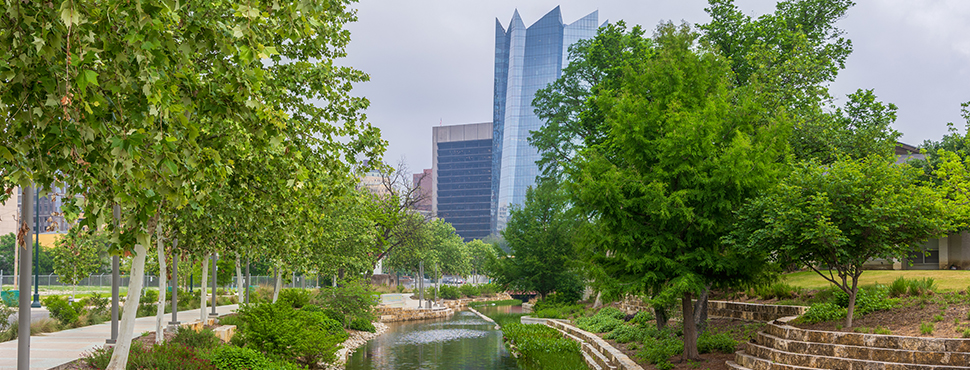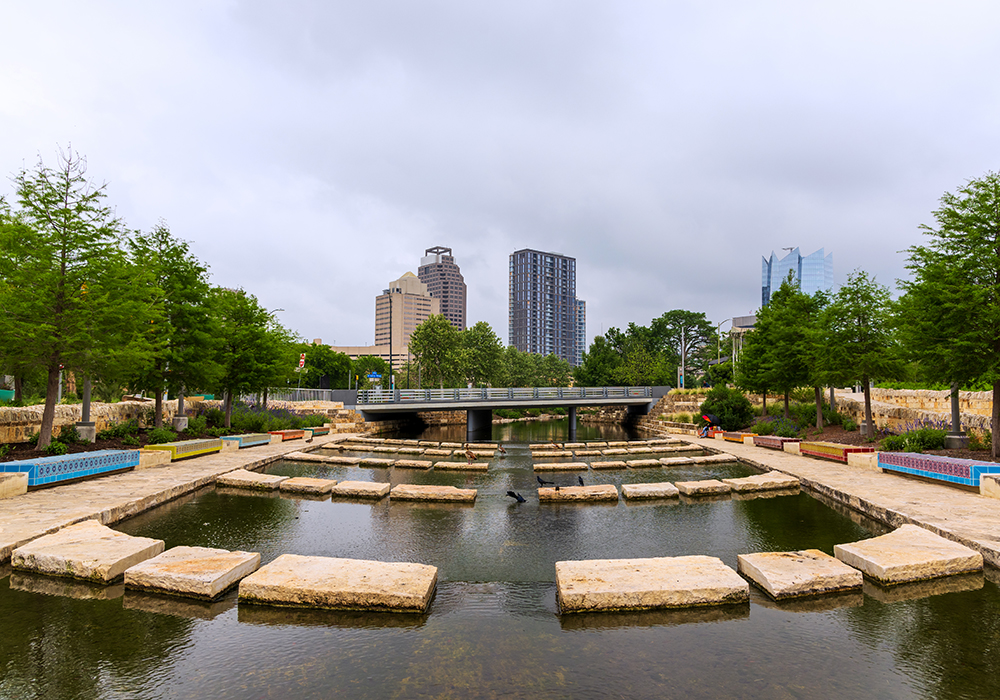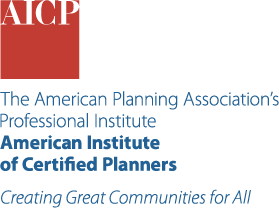Equity in Practice
Reclaiming a Forgotten Waterway to Elevate Culture, Safety, and Ecology
The transformation of San Pedro Creek - from a flood risk to a cultural corridor destination.

For centuries, San Pedro Creek, which flows through downtown San Antonio, Texas, served as a lifeline for Indigenous peoples like the Payaya, who relied on its steady waters for food, shelter, and community gatherings. The creek later gave rise to the founding of San Antonio when Spanish settlers established Mission San Antonio de Valero at the creek's headwaters in 1718.
Community Challenge
Although one of the city's most historically significant waterways, it was reduced to little more than a neglected drainage ditch by the late 20th century. Lined with concrete and prone to flooding, the creek had no ecological function, let alone cultural meaning, for the residents who lived near it. The waterway became a reminder of disinvestment and lost opportunity, cutting through downtown without providing beauty or connection.
The problems extended beyond aesthetics: a 2012 engineering report revealed that frequent flooding along the creek threatened both the safety of residents and nearby buildings. At the same time, San Antonio's rapid growth and thriving tourism industry underscored the contrast between the city's world-famous River Walk and the neglected creek only blocks away. While the need to address pressing safety concerns was paramount, the city, and by extension, the San Antonio River Authority (SARA), also wanted to reclaim the creek as a cultural and ecological corridor that could once again serve as a welcoming, vibrant place for residents and visitors to gather.
Planning Solution
Beginning in 2015, SARA, in partnership with Bexar County and the City of San Antonio, initiated the San Pedro Creek Improvements Project. Although flood control was a central component, the plan extended beyond safety to include water quality enhancements, public art, and opportunities for economic development.
With this project, SARA and its partners envisioned a linear park and cultural space where the layered histories of San Antonio's Hispanic and Indigenous communities could come together to shape a renewed sense of place.
Bexar County allocated an initial $125 million for the creek's early design and construction work. Targeted allocations followed, such as $900,000 for public art in honor of the city's tricentennial in 2016. The project, now known as the San Pedro Creek Culture Park, was structured in four phases, allowing San Antonio residents to experience the creek's transformation in segments while maintaining momentum toward its final vision.
Integrating art into the creek's metamorphosis was critical for partners and stakeholders. A 2016 Public Art Assessment and Strategy report provided the framework for integrating art into the creek's revitalization. To accomplish this, SARA launched a pilot program called San Pedro Creek Arts to manage public art and cultural programming. As part of this program, a full-time curator was tasked with overseeing artist commissions, programming, community engagement, and partnerships.
More than 15 artists contributed over 20 works that celebrated the region's natural and cultural heritage. Among the art installations, poetry is inscribed along the stone walls, conjuring the voices of ancestors and reminding visitors of the creek's deep Indigenous roots. To support this work, the San Antonio River Foundation (SARF) served as fiscal sponsor to help attract philanthropic contributions and additional outside funding.
The first segment of the San Pedro Creek Culture Park opened in May of 2018, revealing not only new art and landscaping but also preserved archaeological features, including 1,800 feet of historic walls and stone foundations dating back to San Antonio's early Spanish presidio era. This evidence of early habitation and settlement was integrated into the park's design to honor the site's Indigenous and Hispanic heritage.
The unveiling of the first phase also offered an early glimpse of the creek's potential; what was once a neglected concrete inlet was transformed into a public space enriched with art, landscaping, and cultural programming. Later phases opened in 2022 and 2023, with the final phase completed in May 2025.
Outcome
The continuous 2.2-mile San Pedro Creek Culture Park has undergone a remarkable transformation. The once-bleak drainage ditch had been reimagined as a vibrant linear park that seamlessly blended infrastructure, ecology, art, and history.

San Pedro Creek Park in San Antonio, Texas. Photo: iStock/Getty Images Plus - Faina Gurevich
More than 1,000 aquatic plants, nearly 600 trees, and thousands of perennials and grasses create a lush habitat where turtles, fish, and birds congregate. Four waterfalls add movement and sound, reinforcing the creek's natural rhythms. At the same time, the creek's redesigned channel now protects an additional 30 acres and 38 buildings from flooding, advancing public safety alongside its visual and cultural appeal.
With a cumulative investment of approximately $300 million to complete the project, the potential returns are substantial. City leaders project an economic impact of $1.5 billion, with more than 2,000 new housing units resulting in a 150 percent increase in property value and increased tax revenue. Additionally, the creek will serve as the scenic backdrop for a new $160 million minor-league baseball stadium, which is expected to open by 2028.
Considerations for Your Community
The San Pedro Creek Culture Park represents a strategic public investment combining infrastructure, ecology, culture, and economic development. This revitalization offers new opportunities for community gathering and artistic expression with roots in history and cultural identity; it is demonstrative of how a waterway once seen as a liability can become a welcoming and inclusive asset to the city.
The San Pedro Creek Improvements Project is a model for following an integrated approach that layers multiple benefits by meeting public safety needs like flood control while also restoring ecosystems and celebrating cultural heritage. Through a mix of public investment and philanthropic support, the City of San Antonio will see a powerful return on its investment for residents. More importantly, the park affirms the identities of historically underrepresented communities by honoring their stories across generations.
Top image: Photo by iStock/Getty Images Plus/ Faina Gurevich
ABOUT THE AUTHOR


